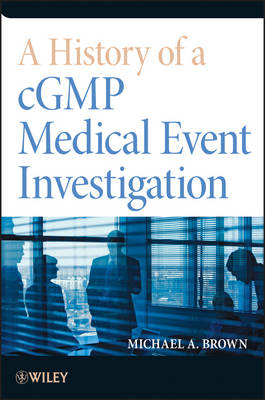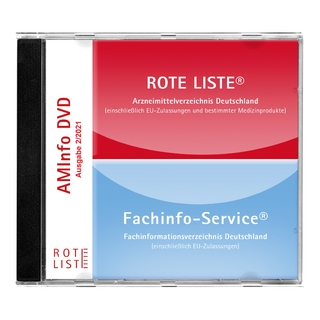
A History of a cGMP Medical Event Investigation
John Wiley & Sons Inc (Hersteller)
978-1-118-49494-3 (ISBN)
- Keine Verlagsinformationen verfügbar
- Artikel merken
Case study details the right way and the wrong way to successfully develop and market a new drug. Beginning with the untimely death of a young mother, "A History of a cGMP Medical Event Investigation" unfolds a fictitious case study that captures how unchecked human flaws during the development and launch of a new drug can lead to disastrous consequences. Moreover, it illustrates how and why Six Sigma principles and methods should be applied to fully comply with FDA regulations at every stage of drug development and commercialization. From initial transgenic mouse studies to the FDA fatality investigation, this case study introduces all the key regulations and practices that govern the development, manufacture, and marketing of a new drug, including: FDA Investigational and New Drug Application Processes; FDA Code of Federal Regulations' current Good Manufacturing Practice (cGMP); and I SPE Good Automated Manufacturing Practice (GAMP). Readers will also be introduced to a variety of managers and researchers whose personal agendas conflict with best practices and therefore compromise the safety and effectiveness of a new drug product.
Throughout the case study, the author offers tested and proven practices and tips so that these human flaws are not translated into drug product flaws. These practices and tips are critical and typically can only be learned through years of experience working in competitive drug development environments. "A History of a cGMP Medical Event Investigation" is ideal for students in biotechnology, pharmacology, engineering, and business management as well as professionals in biomedical and drug development. All readers will discover what can go wrong in developing and bringing a new drug to market. Most importantly, they will also learn how to apply Six Sigma principles and methods to ensure safe and effective product design, development, and manufacturing.
MICHAEL A. BROWN , PhD, PE, is a Visiting Professor at the University of Illinois at Chicago. Dr. Brown has twenty-five years' experience in the biomedical industry in a product and process design capacity with responsibilities for worldwide engineering and management. He has served as a lead engineer on numerous products, process, and equipment projects including design, implementation, and qualifications. He is a registered Professional Engineer and a certified Six Sigma Black Belt with considerable experience in team leadership. The material presented in this case, including the FDA regulations and Six Sigma concepts, was tested in an engineering senior design course taught by Dr. Brown over a three-year period. Student feedback noted that the difficult design principles were explained in an easy-to-read story that introduced them to the Six Sigma methodologies in an engaging manner.
Part One The Event. Chapter 1 Francesca Part Two Drug Discovery five years earlier Chapter 2 Katlin BioScience - Transgenic Mouse Study Chapter 3 Oxy-Fox Inhaler 3.1 Kinnen Laboratories. 3.2 Kinnen Laboratories ? Oxy-Fox transfer. 3.3Due diligence Team - Katlin data Acceptance. Part Three Kinnen Oxy-Fox Inhaler Market Launch Program Chapter 4 - Agency IND and NDA Requirements - Six-Sigma Charter - Device Master Record 4.1 Launch Team Meeting number 1 4.2 Meeting with Medical Affairs ? Toxicity Studies Chapter 5 Meeting Minutes Guidelines. 5.1Launch Team Meeting number 2 Chapter 6 Project Timing ? Marketing Plan ? Offshore Molding 6.1 Launch Team Meeting Number 3 6.2 Project Financial Review. 6.3Progress meeting. - Who takes credit for what? 6.4Morning meeting - Just in Time Manufacturing Chapter 7 - Process Validation Requirements 7.1Launch Team Meeting number 4 Chapter 8 - - Failure Mode Effects Analysis 8.1Launch Team Meeting number 5 Chapter 9 - Design for Manufacturability ? Design for Six Sigma ? Concurrent design. 9.1Product Development meeting number 1 9.2Update meeting with Ed Chase and Gordon Taylor Chapter 10 - Design Fish-Bone Diagram 10.1 Launch Team Meeting number 6 Chapter 11 - Product Specifications 11.1Product Development meeting number 2 Chapter 12 Design Control. 12.1 Design Team Meeting number 6 12.2 Product Development Staff Meeting 12.3Engineering one-on-one. 12.4Program update. Chapter 13 - Design of Experiments - DOE 13.1 Molding Team Meeting Chapter 14 Start-up Issues 14.1Oxy-Fox Inhaler Wrap up and Equipment Start-up Part four Present day - Funeral Chapter 15 - Grief Chapter 16 - The autopsy results Chapter 17 - The Agency Part Five - Agency Medical Event letter Chapter 18 - Kinnen Notification 18.1 Another Agency letter 18.2Medical Event Review Meeting Chapter 19 - Investigation Team Management Chapter 20 - DMAIC Investigation Process - MAIC Chapter 21 Internal Quality Review 21.1 Meeting with Gail Strom and Marcia Hines 21.2 Executive Management Review Chapter 22 - The Agency Audit Letter Chapter 23 - Agency Arrival Chapter 24 - The Audit 24.1Agency meeting to review the Qualification documents and first lot to stock quality acceptance records 24.2Agency meeting to review the Oxy-Fox Inhaler lot used in the NDA Clinical Studies. 24.3Agency meeting to review the Design and Program team meeting minutes. 24.4Agency meeting to review the Due-Diligence report, Katlin studies, and Oxy-Fox Design History File. Chapter 25 - End of day Agency wrap up meeting Chapter 26 - Kinnen Management Review Part Six - Reckoning Chapter 27 - Blame and Responsibility 27.1The Investigation is a public record. Chapter 29 Closure
| Erscheint lt. Verlag | 21.4.2014 |
|---|---|
| Verlagsort | New York |
| Sprache | englisch |
| Maße | 235 x 275 mm |
| Gewicht | 1817 g |
| Themenwelt | Medizin / Pharmazie ► Medizinische Fachgebiete ► Pharmakologie / Pharmakotherapie |
| Naturwissenschaften ► Chemie | |
| Technik | |
| ISBN-10 | 1-118-49494-6 / 1118494946 |
| ISBN-13 | 978-1-118-49494-3 / 9781118494943 |
| Zustand | Neuware |
| Haben Sie eine Frage zum Produkt? |
aus dem Bereich
